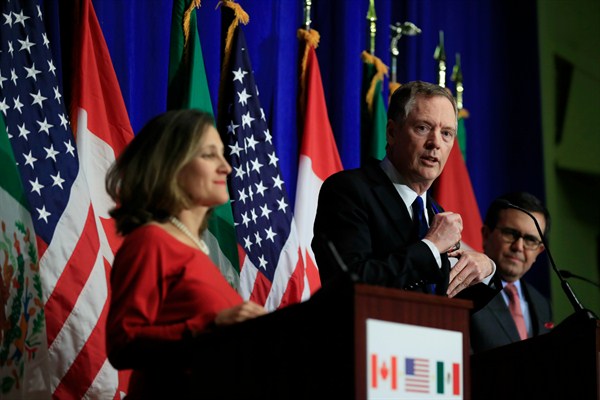In making trade policy, process is as important as substance. If the process is perceived as fair, the participants, both citizens and policymakers, will likely view the outcomes as fair. The Trump administration has never understood that. It demands “fairness” from its trade partners but doesn’t always treat them fairly.
After immediately withdrawing from the 12-nation Trans-Pacific Partnership and threatening to withdraw from longstanding trade agreements, such as NAFTA and even the World Trade Organization, President Donald Trump has made it clear he views trade as a zero-sum game where only one side can “win.” But trade is about mutual benefit.
At his speech in Davos last month, Trump outlined a kinder, gentler version of his protectionist agenda. “We cannot have free and open trade if some countries exploit the system at the expense of others,” he declared. “Only by insisting on fair and reciprocal trade can we create a system that works not just for the U.S., but for all nations.” The Trump administration is trying to ensure that these expectations translate into trade policy, but there are inherent contradictions. The early withdrawal from the TPP and the demand that Canada and Mexico renegotiate the North American Free Trade Agreement, or risk Trump axing the deal, were an ominous start. After the sixth round of NAFTA talks in Montreal in late January, Trump’s top trade negotiator, Robert Lighthizer, summarized his vision of the negotiations: In order to modernize NAFTA, “we need to rebalance” in America’s favor.

